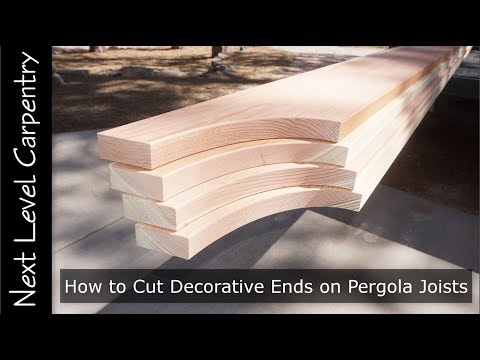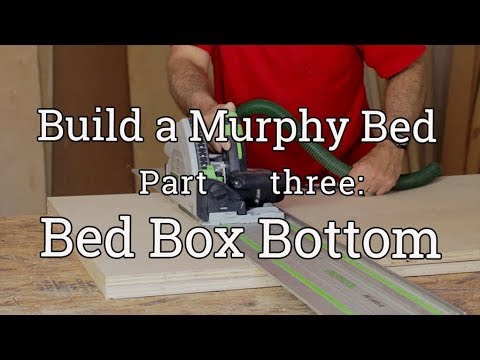A couple of sticks are all you need to scribe smooth arcs that cover wide work pieces
Fancy sticks are optional.
OFFICIAL TRANSCRIPT:
In this video, I'll show the method I used to draw the arcs to create this pattern that was used to make the curved top rails of this pair of redwood and cedar gates.
Some of the most challenging and rewarding projects that I do are projects like this pair of gates that incorporate a graceful curve into their design. There's a lot of next-level carpentry involved in building a gate like this, but one of the fundamentals is the ability to draw a smooth, consistent arc for creating a pattern to make these top rails.
All that's really needed to draw a smooth, accurate arc is a pencil, tape measure, a couple of nails, a hammer, and a pair of sticks. While any sticks will do the job, I learned that by modifying the sticks, I can get quicker, more accurate results with a little less frustration. To modify the sticks, alls I've done is taken a couple of 1X4s, straightened the edges, and then milled a half-lap joint on one end of each of the sticks, so that they lay flat while drawing the arc.
Regular sticks work okay, but it's a little more difficult to line things up and guide them if one of the sticks isn't laying flat on the drawing surface. You'll see what I mean as I go through the process. One of the things that make this arc-drawing method particularly handy is the fact that I don't need to know the specific radius for the arc.
Dimensions
What I need to know is the length of the arc, and then the amount of rise or bulge in the arc. For this example, I'm just gonna do a 48-inch arc, and let's make the rise 6 7/8 inches, just because we can. To draw an arc, I just need to start out with a baseline, so I'll scribe a line here across this sheet of plywood.
The sheet is 5 feet, so we'll center up 2 feet on there for our 4-foot arc, marking 2 foot each way off of a center line.
In the center, wanna make another mark at 6 7/8 inches. These marks represent the width of the arc and the bulge at the center. With the layout marks done, I just drive a nail at each end of the baseline that represents the width of the arc. After that, I just position the two sticks so that they rest on the nails and meet at this point of the bulge.
I should note here that the length of the stick needs to be longer than the length of the arc being drawn so that the sticks can ride on the nails during the complete process of drawing the arc.
Draw the arc
I line up the first board exactly on the mark and draw a square line so that I can make the second board meet at the center point of the bulge.
Then, I simply tack the two sticks together. The more distance that I can get between the two nails, the more stable the sticks will be during the drawing process.
With the sticks set up and everything in place, drawing an arc is simply a matter of holding a sharp pencil at the center point and sweeping the sticks from one nail to the other, keeping the sticks in contact with the nails the whole time.
And that's really all it takes to draw a very accurate, smooth, consistent arc of a given width and bulge.
One drawback of this method is that the length of the sticks needs to be greater than the length of the arc being drawn, so a pair of sticks doubles the width of the arc.
If you're drawing arcs greater than 6 feet, it gets a little bit wieldy, because you're working with a pair of sticks that total over 12 feet long. It can be done, I've drawn 8-foot arcs with this method, it just gets a little bit awkward as the width of the arc increases.
Drawing a concentric arc
I'll go through this process again and draw a second concentric arc like I need to do for this 5-inch wide pattern for the top rail on the gates.
Of course, one way that works fine when making a pattern is to draw, cut, and true the arc on one side of the pattern, and then just scribe a concentric arc for the other side of the pattern. But for this example, I'm just gonna set up and draw a concentric arc.
I'll add 5 inches to the arc at the center and then transfer the endpoint marks, as well. Keep in mind that 5 inches on the sides need to be a radial line that intersects the arc width, not a measurement up the line that represents the arc width.
You can see that the radius has changed by the fact that the center mark no longer lines up. If I was to draw this second arc using these nails and the same stick setup, I'd get a pattern that was wider in the middle than at the ends. But it's very simple to change the setup. Just re-line the center mark on the new center, line up the two sticks and re-drive the nail.
Need to be careful to not let your pencil drift off the mark like it did for me, but it's an easy fix. And there you have it two concentric arcs, drawn 5 inches apart, that can be cut out to make a pattern, which can then be traced on a piece of lumber and routed to form a perfect top rail. Well, there you have it.
Another next-level carpentry method that you can use for drawing smooth, accurate arcs anytime you're working on a project that has curved parts involved.
I hope you enjoyed this video and find it useful. Check out other videos here at Next Level Carpentry that shows how to draw an ellipse, or how to draw a circle with a square. And please, feel free to comment or make suggestions. It's those comments and suggestions that help make this channel a place where viewers can learn and take their carpentry skills to the next level.
—Matt Jackson is a master carpenter, remodeler, SketchUp Wiz, YouTuber, and contributing editor to ProTradeCraft. He lives and works in Rapid City, South Dakota.











